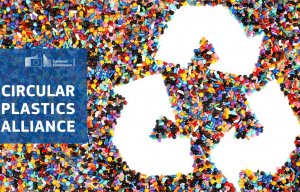
Clariant joins the EU Circular Plastics Alliance
Recycled content is not easily traceable when it comes to chain of custody for garments.

11th November 2025
Innovation in Textiles
|
Europe
The many initial difficulties involved in attempting to establish a circular system for textiles in Europe were outlined during the Go Circular Summit webinar held on November 5th, entitled Bridging Textile Policy and Practice: Unlocking Europe’s Textile Recycling Potential.
Mauro Scalia, director of sustainable businesses for European textile and apparel association Euratex, reported that while the European Commission (EC) remains committed to the Green Deal it announced six years ago, there is a new emphasis on competitiveness.
Waste Directive
Three key pieces of legislation will have a major impact on the textiles industry, starting with the 2025 Waste Directive which was introduced on January 1st this year with the intention of making the collection, sorting and reuse of discarded textile waste mandatory, just like glass and paper.
Not all countries were prepared for this, Scalia said, and the date for compliance has now been extended. From September this year, however, the clock started ticking and all member states have been given a further 20 months to establish their own national pieces of legislation. These will include introducing Extended Producer Responsibility (EPR) schemes to cover the cost of collection, sorting and recycling and for each country to have established a Producer Responsibility Organisation (PRO) to oversee these programmes.
Such schemes already exist in some countries, with France having run an EPR scheme for the past 14 years and more recent initiatives so far introduced in the Netherlands, Hungary and Latvia.
By 2028, however, the EC will be seeking to harmonise the individual schemes of each member state into a cohesive single piece of legislation.
“This is important because currently we can see a scenario where every single member state sets different criteria to define how much should be charged on garments and this could give contradictory signals to the market,” Scalia said.
Eco Design
A second piece of legislation, Eco Design for Sustainable Products (ESPR), will set as yet undefined minimum performance and information requirements on garments being sold into the EU market. The first part of it will be a ban on the destruction of goods which comes into force in July 2026 and in 2027 brands will be obliged to report all of the unsold goods they produce in order to prevent over production.
Businesses will be given 18 months to comply with these rules.
CEA
The third piece of legislation which is important is the Circular Economy Act (CEA) which is currently at the consultation stage and aims to support the use of recycled and secondary materials in Europe.
There is the potential for public procurement guidelines to be established for textile products and services and this could extend not just to uniforms for the military and civil authorities but also to home textiles used in offices and hospitals, for example. A proposal is expected in 2026, which given the usual timeline for legislation in Brussels, means it could become law in 2028.
“The EC currently has a strong focus on competitiveness and reducing regulatory burdens and Euratex sees opportunities to simplify and harmonise how, for instance, EPR schemes might be run,” Scalia said. “At the same time, there are many challenges being actively discussed such as the mandatory inclusion of recycled content, as has been introduced for plastic packaging. There are a lot of question marks here, not least the issue of verification and compliance because recycled content is not easily traceable when it comes to chain of custody for garments and cannot easily be checked by testing. There is a fundamental need for cooperation across the value chain in the making of this legislation.”
A further obstacle is establishing a level playing field since over 80% of the garments sold in the EU are now imported. The number of garments coming in that are checked by public authorities, however, is below 0.008%, so there is a fundamental problem in the capacity of the member states to check current requirements, let alone the future ones introduced by this legislation.
“The good news is that there are strong signals from Brussels that market surveillance will be strengthened,” Scalia concluded. “Europe has the most ambitious stategy when it comes to sustainability in textiles but the economic relevance of the bloc is very much challenged by the dominance of other regions.”

Business intelligence for the fibre, textiles and apparel industries: technologies, innovations, markets, investments, trade policy, sourcing, strategy...
Find out more